Ancient History looks at every aspect of the ancient world: you'll find articles covering politics, society, literature, language, religion, economics, and art - all in one magazine! Like its big brother, Ancient Warfare, Ancient History Magazine is a bi-monthly, 60-page magazine that relies on a thematic approach: each issue is centered around one specific subject. From ancient Egyptian trade and Roman family life to the lost city of Pompeii, there's sure to be something for everyone - all presented in a well-researched but accessible, fun manner.
Ancient History Magazine
PRELIMINARIES
Geometric period may have started much earlier
Ancient cities and roads of the Amazon mapped
Scarab seal may prove Assyrian rule in the Galilee
Toxic seeds found in Roman container in the Netherlands
Opulent 'hundred square' temple for Artemis on Euboea
Brother and sister re-emerge to tell their tale in Pompeii
Wealthy Roman villa discovered in England
THE OBBINK AFFAIR • Academic scholars are under pressure to publish articles. Unfortunately, this pressure can become too great, and academics can be tempted to cooperate with traders in illegal antiquities, making scholars complicit in theft.
ETRUSCAN AMBER • Amber from the Baltic Sea spread throughout the ancient world, even as far as Egypt. However, amber objects, often carved into the shapes of animals and anthropomorphic figures, frequently appear in Etruscan tombs, seemingly more so than elsewhere. Why do the Etruscans seem to have so highly valued this material? Was it simply a precious material or did it have greater significance?
The power of the ram
An international trade hub
THE TEMPLE OF ARTEMIS • One summer night in 356 BC, the citizens of Ephesus awoke to find their seaside town covered by a thick blanket of smoke. Its source was the community’s pride and joy, an enormous temple dedicated to the Greek goddess Artemis. Quite possibly the largest temple in existence at that point in time, it had inexplicably burst into flames.
FREEDOM FOR THE GREEKS • The Hellenistic period, a world of vast empires and Greco-Mace-donian dynasties, bears little resemblance to the earlier period of Greek history, with its city states, both great and small. How-ever, despite the vast power differences between the city states and the monarchies, diplomacy was still as important as ever.
WEAVING THE DYNASTIC WEB • Marriage alliances have been the most common feature of royal diplomacy throughout history, binding rival dynasties together through both pacts and blood. However, in the Hellenistic period, dynastic marriages were also a way that royal women could influence the politics of the period.
Do as the pharaohs did
A THREAT TO GREECE • In the early third century BC, the Hellenistic states of Greece clashed with an incoming Celtic migration, providing a propaganda opportunity for the various kings and leagues to present themselves as the saviours of the Greeks.
Celtic migrations
Pergamene Priam
DIPLOMACY IN THE HELLENISTIC WORLD • The Hellenistic period was a volatile era for mainland Greece. Alexander’s death in 323 BC initiated a fifty-year mess of changing kings, shifting borders, and tenuous alliances, eventually seeing the emergence of several kingdoms. It was an era of battling superpowers and changeable politics, and the Greeks had to learn quickly how to navigate this highly competitive environment if they wanted to survive.
CLEOPATRA • Cleopatra VII ruled Egypt during the twilight of the Ptolemaic period, when the dynasty was being eclipsed by the Roman Republic. Ruling at a time when Rome was divided by civil wars, she used the chaos to renegotiate Egypt’s position in the Mediterranean, allying herself with the dominant political factions...
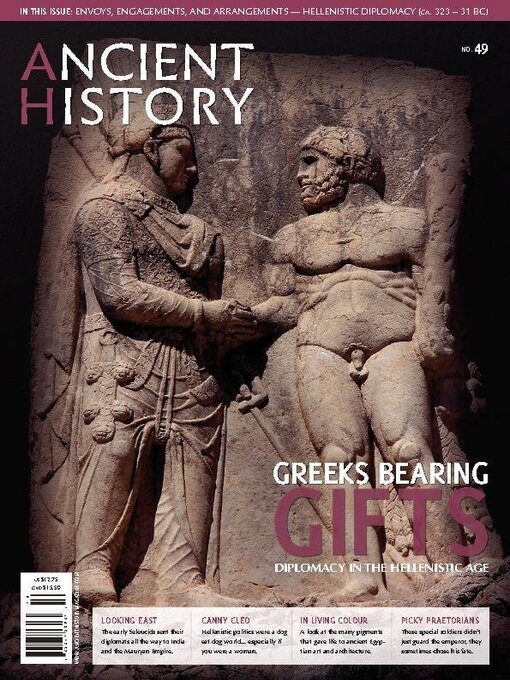
 AH 52
AH 52
 AH 51
AH 51
 AH 50
AH 50
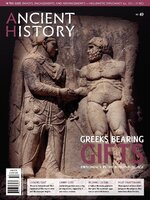 AH 49
AH 49
 AH 48
AH 48
 AH 47
AH 47
 AH 46
AH 46
 AH 45
AH 45
 AH 44
AH 44
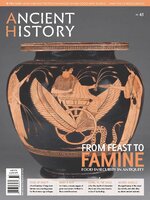 AH 43
AH 43
 AH 42
AH 42
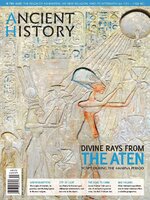 AH 41
AH 41
 AH 40
AH 40
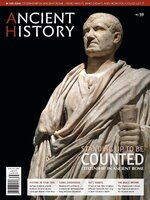 AH 39
AH 39
 AH 38
AH 38
 AH 37
AH 37
 AH 36
AH 36
 AH 35
AH 35
